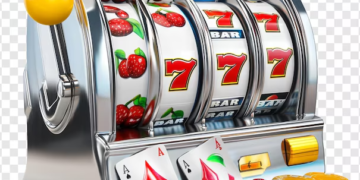Introduction to Worldle Map Guessing Game
Have you ever dreamed of traveling the world without leaving your chair? Welcome to Worldle, the map guessing game that’s as addictive as it is educational. Worldle isn’t just about recognizing countries — it’s about sharpening your mind, flexing your memory, and picking up fascinating geography facts along the way.
As a game developer myself, I’m always fascinated by simple game mechanics that create deep engagement — and Worldle nails this beautifully. In a world where most games are designed to be flashy distractions, Worldle stands out by being simple, challenging, and surprisingly rewarding. Let’s dive into why mastering this gem is worth your time.
How To Play Worldle Map Guessing Game
Getting started with Worldle is refreshingly easy — no complicated setup or overwhelming tutorials required. And trust me, from a developer’s standpoint, that kind of onboarding is an art form.
Here’s a quick step-by-step guide:
- Open the Worldle Game: You’ll usually find it through a simple Google search, or you can bookmark the official site for daily fun.
- Look at the Silhouette: The game presents you with a blacked-out outline of a country or territory. No hints, no borders, no labels — just a shape floating on a blank screen.
- Make Your First Guess: Enter the name of a country. If you guess correctly, congrats! If not, Worldle will help by telling you how far your guess is from the correct country and in which direction you should look.
- Follow the Hints: Based on the distance (in kilometers) and the arrow indicators (pointing north, south, east, or west), you refine your next guess.
- Six Tries To Glory: You get six guesses to land on the right answer. And yes, it feels very satisfying when you get it right with only a clue or two!
What impresses me most as a designer is how Worldle uses constraint-based gameplay (limited guesses and directional hints) to naturally build tension and excitement without ever needing flashy graphics or complex rules.
It’s a great reminder that good game design serves the player, not the other way around.
Creative Ways To Play Worldle Map Guessing Game
The base gameplay is already engaging, but the real magic often comes from how you play with the play. Here are a few creative spins I love:
- Speed Runs: Challenge yourself (or friends) to guess the country in the fastest time possible. Stopwatch ready?
- Memory Challenge: Cover the screen immediately after seeing the silhouette for just three seconds. Can you guess based on that tiny glimpse?
- Regional Play: Focus on specific continents. For example, only accept guesses from African countries for one week to really test your knowledge.
- Team Play: Play in pairs or groups, where one person makes the guesses and the others act as “advisors.” Be prepared for some hilarious disagreements!
- Hardcore Mode: No using maps, no hints, and if you don’t know the country — no Googling! It’s just you and your brain battling for world dominance.
As a game designer, I always encourage players to bend the rules a little — it keeps gameplay fresh and personal.
Worldle’s elegant simplicity makes it the perfect playground for creative challenges like these.
How Worldle Map Guessing Game Can Improve Thinking Skills
It might just feel like fun, but beneath the surface, Worldle is doing your brain some serious favors. (And honestly, as someone who designs games, seeing players grow through gameplay is one of the most satisfying rewards.)
Here’s how it’s stealthily making you smarter:
- Spatial Reasoning: Recognizing country shapes and figuring out where they are geographically strengthens your spatial visualization skills.
(Who knew Sri Lanka’s outline could become so familiar?) - Critical Thinking: Each wrong guess forces you to rethink logically — “If it’s 800km west, what’s nearby?”
- Memory Improvement: Regularly playing Worldle naturally builds your mental “world map,” helping you remember countries and their relative positions.
- Problem Solving: Every silhouette is a puzzle waiting to be solved. You’re constantly analyzing clues, revising strategies, and making decisions — excellent training for real-world problem-solving.
- Cultural Awareness: Even if it’s just a small fact here or there, you inevitably start learning about different countries, regions, and cultures you might not have explored otherwise.
From a development perspective, Worldle is a textbook example of “stealth learning” — when the player is having so much fun, they barely realize how much they’re learning. And if you ask me, that’s the gold standard for any educational game.
Other Country Guessing Games Similar To Worldle Map Guessing Game
Love Worldle but looking for more variety? Good news — there’s a whole world (pun totally intended) of map-based guessing games out there:
- Globle: Instead of guessing based on a silhouette, you guess any country, and the game will tell you how close you are to the hidden target. It’s like warmer-colder, but with the globe.
- GeoGuessr: This classic drops you into a random spot on Google Street View, and you have to guess where you are. It’s pure exploration, mystery, and deduction.
- Citydle: Like Worldle, but instead of countries, you guess cities based on vague hints. Perfect for the urban explorers at heart.
- Flagle: Obsessed with flags? This guessing game reveals parts of a national flag one by one until you can guess which country it belongs to.
- Statele: A US-focused variant where you guess US states based on their silhouettes. Great if you want a homegrown challenge!
Each of these games taps into different aspects of geography — visual memory, deduction, logic — and proves that educational games can absolutely be compelling when built with care and creativity.
From a developer’s lens, I really admire how each game finds its own “hook” and leans into it fully — a crucial lesson in making games stand out without trying to do everything at once.
FAQs – Map Guessing Game
Is Worldle free to play?
Yes! Worldle is completely free. No subscription, no paywalls, just pure, unfiltered geography fun.
Can kids play Worldle?
Absolutely. It’s a fantastic, kid-friendly game that sneaks in a lot of learning under the radar. Plus, it’s a great way to introduce young ones to world geography.
What if I’m really bad at geography?
No worries! Everyone starts somewhere. The more you play, the better you’ll get — and honestly, that’s half the fun.
(And honestly, if you get one right that you thought you’d miss, it’s a total mic-drop moment.)
How often does Worldle update?
There’s a new puzzle every single day. One guess at a time keeps the wanderlust alive!
Can I play previous Worldle puzzles?
Currently, Worldle is designed for daily play — once the day is over, a new silhouette appears. (Which makes it even more special, right?)
Conclusion
Mastering Worldle isn’t just about winning — it’s about the journey. Every guess, every silhouette, every wrong answer you laugh at teaches you something new about the world we live in.
As a game developer, I truly believe the best games don’t just entertain — they inspire curiosity, sharpen thinking, and create memorable experiences. Worldle checks all those boxes with flying colors.
So next time you see an odd-shaped blob on the screen, don’t panic — embrace the challenge, make your best guess, and enjoy the thrill of discovering new corners of the globe, one silhouette at a time. Ready to play? The world’s waiting.






















